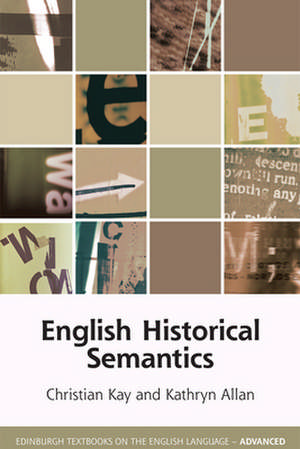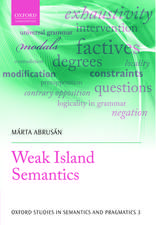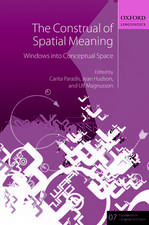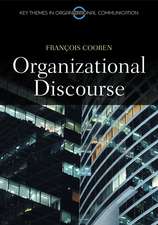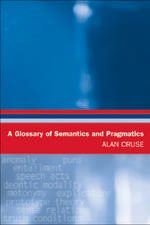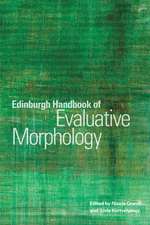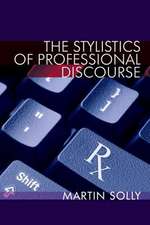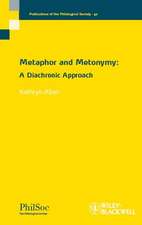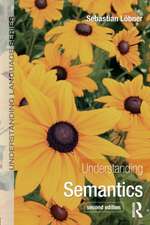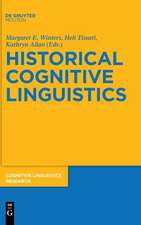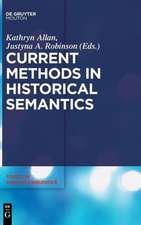English Historical Semantics: Edinburgh Textbooks on the English Language Advanced Eup
Autor Christian Kay, Kathryn Allanen Limba Engleză Paperback – 30 sep 2015
Preț: 165.48 lei
Preț vechi: 178.72 lei
-7% Nou
Puncte Express: 248
Preț estimativ în valută:
31.67€ • 34.39$ • 26.60£
31.67€ • 34.39$ • 26.60£
Carte disponibilă
Livrare economică 01-15 aprilie
Livrare express 15-21 martie pentru 37.22 lei
Preluare comenzi: 021 569.72.76
Specificații
ISBN-13: 9780748644773
ISBN-10: 0748644776
Pagini: 224
Ilustrații: 224 Illustrations
Dimensiuni: 137 x 213 x 18 mm
Greutate: 0.32 kg
Editura: EDINBURGH UNIVERSITY PRESS
Seria Edinburgh Textbooks on the English Language Advanced Eup
ISBN-10: 0748644776
Pagini: 224
Ilustrații: 224 Illustrations
Dimensiuni: 137 x 213 x 18 mm
Greutate: 0.32 kg
Editura: EDINBURGH UNIVERSITY PRESS
Seria Edinburgh Textbooks on the English Language Advanced Eup
Cuprins
Chapter 1: Introduction; Chapter 2: A brief history of the English lexicon; 2.1 Introduction; 2.2 Old English (OE: 700-1150); 2.3 Middle English (ME: 1150-1500); 2.4 Early Modern English (EModE: 1500-1750); 2.5 Late Modern English (LModE: 1750 to present day); 2.6 Conclusion: The Present Day; Chapter 3: Categories of meaning; 3.1. Introduction; 3.2 Traditional approaches to Semantics; 3.2.1 Reference; 3.2.2 Sense; 3.2.2.1 Sense relationships; 3.2.3 Components, sets and fields; 3.2.4 A note on homonymy; 3.2.5 A memory aid; 3.3 Categories and prototypes; 3.3.1 Prototypes in action; 3.3.2 Lexical prototypes; 3.3.3 Homonymy revisited; 3.4 Domains and frames; 3.5. Conclusion; Chapter 4: Tracing the development of individual words; 4.1 Introduction; 4.2 Introducing the OED; 4.2.1 OED1; 4.2.2 OED2; 4.2.3 OED3; 4.3 What the OED tells us; 4.3.1 manga2; 4.3.2 monster; 4.3.2.1 Formal history and etymology of monster; 4.3.2.2 Semantic history; 4.3.3 Overview; 4.4 Some other historical dictionaries; 4.4.1 Middle English Dictionary (MED); 4.4.2 Anglo-Norman Dictionary (AND); 4.4.3 Dictionary of the Scots Language (DSL); 4.4.4 Dictionary of Old English (DOE); 4.4.5 Other dictionaries; 4.5 Historical corpora; Chapter 5: How and why words change meaning; 5.1 Introduction; 5.2 The significance of meaning change; 5.3 Studying semantic change; 5.4 The process of semantic change; 5.5 Categories of meaning change; 5.5.1 Widening (or broadening or generalisation) and narrowing (or specialisation); 5.5.2 Amelioration (or elevation) and pejoration (or deterioration or degeneration); 5.5.3 Metaphor and metonymy; 5.6 Grammaticalisation; 5.7 Why do words change meaning?; 5.7.1 External factors; 5.7.2 Internal factors: polysemy, homonymy, synonymy; 5.7.3 Stylistic factors; 5.8 Conclusion; Chapter 6: Larger categories; 6.1 Introduction; 6.2 A brief history of thesauruses; 6.3 The structure of thesauruses; 6.3.1 Basic level and other categories; 6.3.2 Folk and expert categories; 6.4 Using HTOED; 6.4.1 The structure of HTOED; 6.4.2 Inside HTOED categories; 6.5 Conclusion; Chapter 7: English Colour Terms: A case study, C. P. Biggam; 7.1 Introduction; 7.2 How to describe colour; 7.3 What are Basic Colour Terms?; 7.4 The evolution of basic colour categories; 7.5 The development of colour terms in English; 7.5.1 Old English (OE: 700-1150); 7.5.2 Middle English (ME: 1150-1500); 7.5.3 Modern English (ModE 1500-); 7.6 The changing nature of a basic category: BLUE; 7.7 Summary; 7.8 Conclusion; Chapter 8: Language and culture; 8.1 Introduction; 8.2 Linguistics and anthropology; 8.3 Pronouns of address; 8.4 Kinship; 8.4.1 Recent changes; 8.5 Time; 8.6 Conclusion; Chapter 9: Metaphor and metonymy; 9.1 Introduction; 9.2 Metaphor in language and thought; 9.3 Another kind of mapping: metonymy; 9.4 Metaphor and motivation; 9.5 Metonymy and motivation; 9.6 Conclusion; Chapter 10: The big picture and a look ahead; 10.1 Introduction; 10.2 The big picture; 10.3 Green as an example; 10. 4 Looking ahead; References; Glossary of key terms; Index
